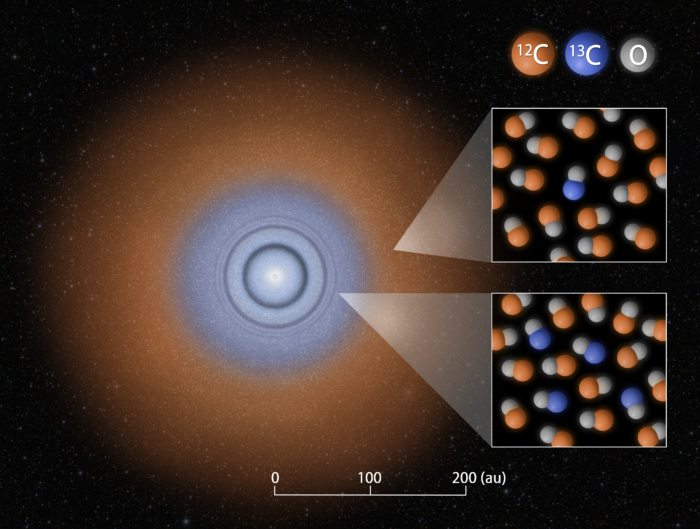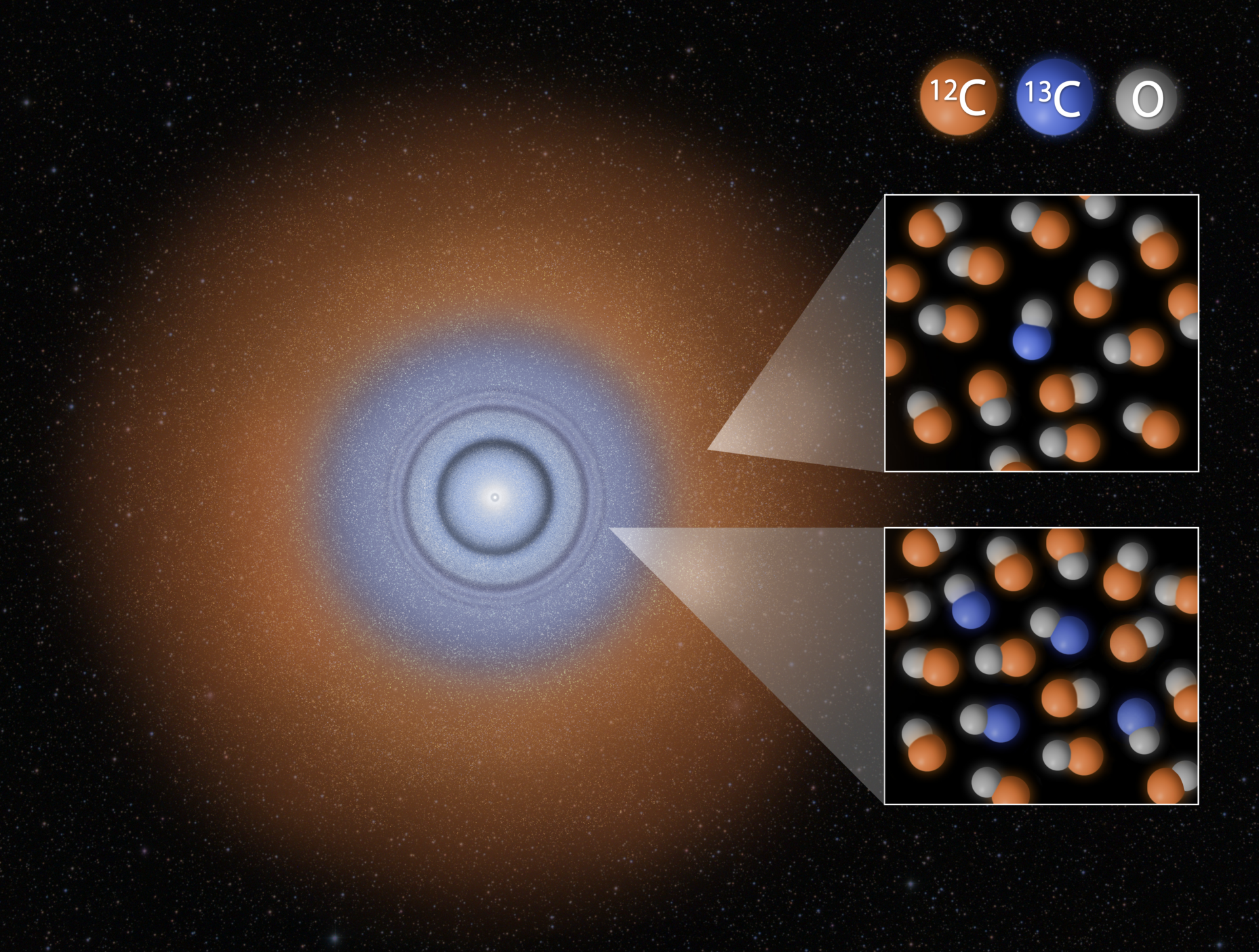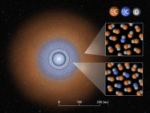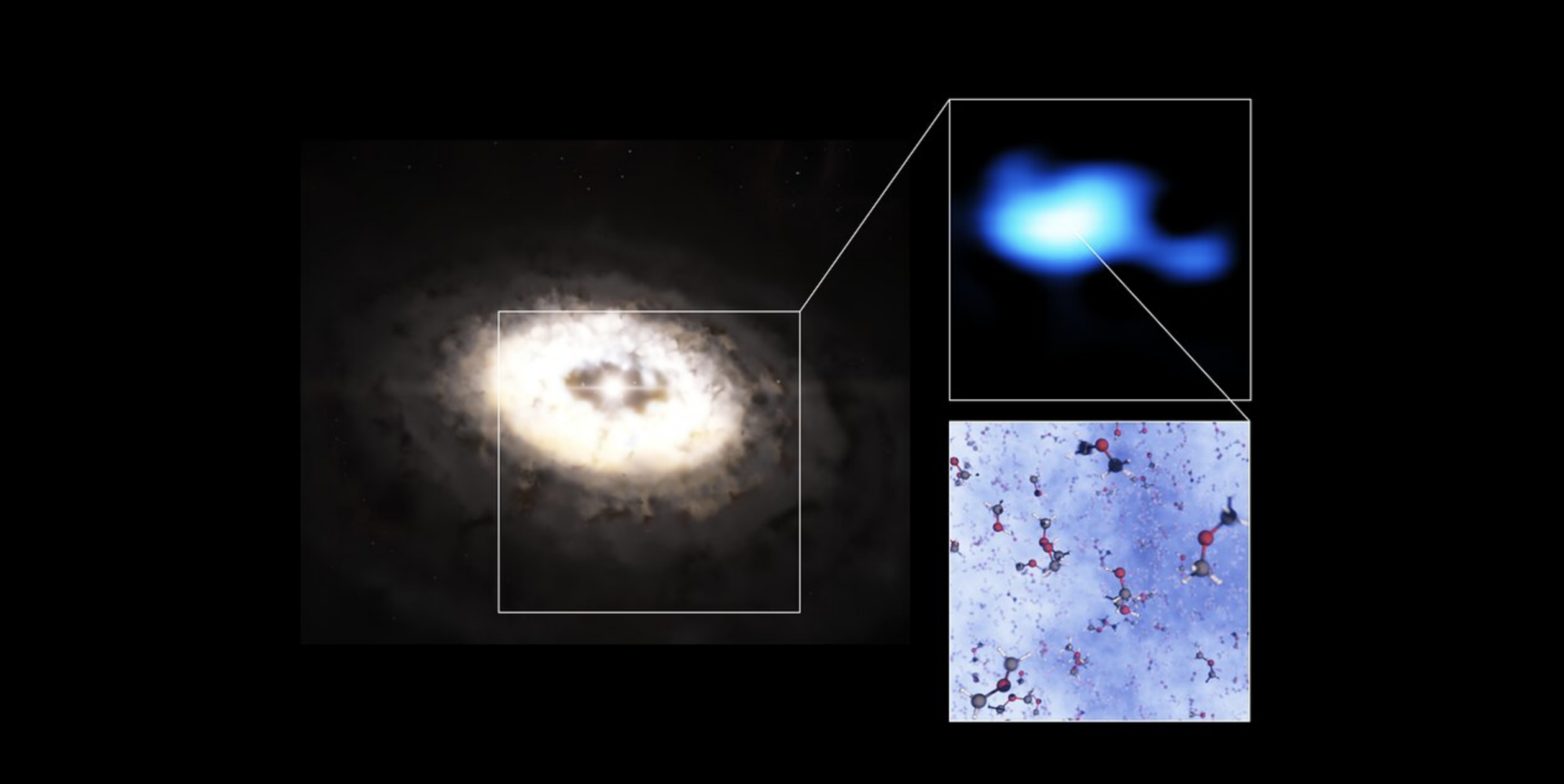New Material "Fingerprint" to Understand Planetary System Formation with ALMA
Using data from the Atacama Large Millimeter/submillimeter Array (ALMA), a research team has discovered that the abundances of different molecular species vary significantly around the site of planets. The team found significant differences in the carbon monoxide isotopologue ratio depending on the region by applying a newly developed method to measure it. This ratio offers astronomers a new "fingerprint" to trace the origins of materials in the protoplanetary disk around the star TW Hydrae and provides a new method for understanding where and how the materials of the Solar System and exoplanets were created and transported.
The Solar System was born about 4.6 billion years ago in the protosolar disk, a cloud with gas and dust surrounding the young Sun. Although we are beginning to understand the planet-forming processes, there are still many mysteries; where did the materials comprising the planets, asteroids, and comets of the Solar System form, and how were they transported?
The composition of isotopes (varieties of an element with different atomic weights) could serve as a fingerprint for understanding the formation of the Solar System. For example, it is known that deuterium (an isotope of hydrogen) in the Earth's water is more abundant than the average value in the Universe. Moreover, ice in molecular clouds, where stars are born, also has a higher deuterium abundance. By matching these two fingerprints, we can infer that some of the water in Earth's oceans came from ice created in the molecular cloud where the Sun was born.
Many protoplanetary disks, where planetary systems are just forming, have been observed. It is believed that protoplanetary disks are very similar to the disk that existed around the Sun while the planets of the Solar System were formed. Therefore, we may be able to understand where and how the various materials in the Solar System were created by comparing the isotopic compositions of materials found in the modern Solar System with the ones observed in the protoplanetary disks around young stars. The isotopic composition of materials in the Solar System has been investigated by analyzing meteorites and samples from asteroids or comets obtained by probes such as Hayabusa, operated by the Japan Aerospace Exploration Agency. However, except for a few abundant species of molecules, measuring the isotopic compositions in protoplanetary disks has been difficult. It was impossible to simultaneously measure the abundances of both rare and abundant isotopes (or isotopologues).
The research team led by Tomohiro Yoshida, a graduate student at The Graduate University for Advanced Studies in Japan, has developed a new method to measure isotopologue ratios in protoplanetary disks using a part of radio spectra that had not been focused on previously. They applied this method to the ALMA archival data to determine the carbon monoxide isotopologue ratio (13CO to 12CO) in the protoplanetary disk around TW Hydrae. The target object is a relatively old protoplanetary disk. Thus, it is likely that materials in the disk are well evolved and that the carbon monoxide isotopologue ratio has changed over time.
They found that the carbon monoxide isotopologue ratio is four times higher in the inner region of the disk than in the outer one. Since the balance between 13C and 12C (carbon isotope ratio) is almost uniform in many objects in the Solar System, the team had expected that it would also be in the protoplanetary disk. This unexpected result suggests that the carbon isotope ratio, like the deuterium ratio, can be a useful "fingerprint" for tracing the origins of materials. Indeed, materials with carbon isotope ratios that deviate from the cosmic average have been found in meteorites. Recent observations of exoplanetary atmospheres also suggest that some planets have high 13CO abundances while others have low ones. Matching these "fingerprints" to locations in protoplanetary disks would provide a clue for understanding the origins of the materials in Solar System bodies and exoplanets.
"We are going to investigate what factors are responsible for these isotopic ratio variations in the protoplanetary disk around TW Hydrae. We aim to explore the material origins of the Solar System and exoplanetary systems by comparing results from many protoplanetary disks, exoplanets, and meteorites," says Tomohiro Yoshida, the lead author of this study.
Additional information
These research results will be published in T. Yoshida et al. "A New Method for Direct Measurement of Isotopologue Ratios in Protoplanetary Disks: A Case Study of the 12CO/13CO Ratio in the TW Hya Disk" in the Astrophysical Journal Letters (DOI: 10.3847/1538-4357/ac6efb).
The original image release was published by the National Astronomical Observatory of Japan (NAOJ) an ALMA partner on behalf of East Asia.
The Atacama Large Millimeter/submillimeter Array (ALMA), an international astronomy facility, is a partnership of the European Organisation for Astronomical Research in the Southern Hemisphere (ESO), the U.S. National Science Foundation (NSF) and the National Institutes of Natural Sciences (NINS) of Japan in cooperation with the Republic of Chile. ALMA is funded by ESO on behalf of its Member States, by NSF in cooperation with the National Research Council of Canada (NRC) and the Ministry of Science and Technology (MOST) and by NINS in cooperation with the Academia Sinica (AS) in Taiwan and the Korea Astronomy and Space Science Institute (KASI).
ALMA construction and operations are led by ESO on behalf of its Member States; by the National Radio Astronomy Observatory (NRAO), managed by Associated Universities, Inc. (AUI), on behalf of North America; and by the National Astronomical Observatory of Japan (NAOJ) on behalf of East Asia. The Joint ALMA Observatory (JAO) provides the unified leadership and management of the construction, commissioning and operation of ALMA.
Image

Contacts
-
Nicolás Lira
Education and Public Outreach OfficerJoint ALMA Observatory, Santiago - ChilePhone: +56 2 2467 6519Cel: +56 9 9445 7726Email: [email protected] -
Junko Ueda
Public Information OfficerNAOJEmail: [email protected] -
Amy C. Oliver
Public Information & News Manager -
Bárbara Ferreira
ESO Media Manager


